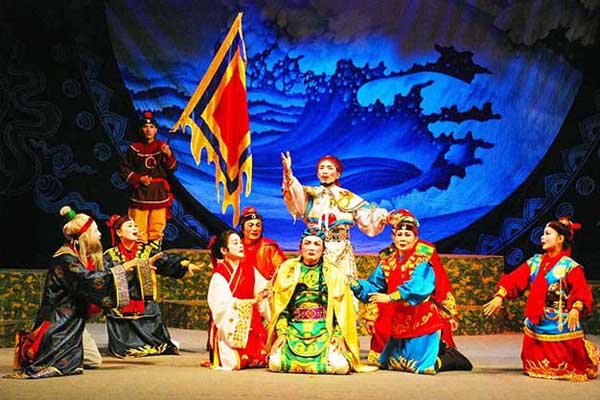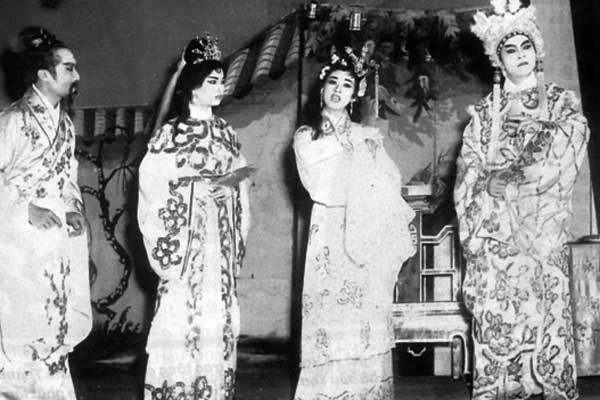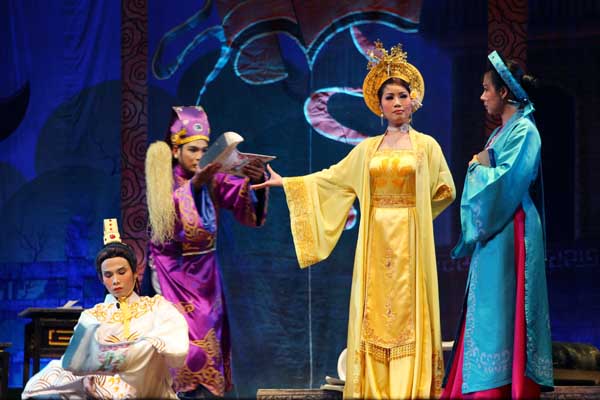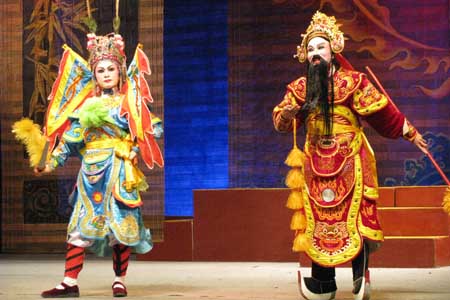Tuong – Vietnamese Opera is one of the genres of the Vietnamese traditional theatre. It is said that, during the 12th century, the classical opera was influenced by the Chinese plays acted by the soldiers of the Sino-Mongolian invaders captured prisoners in Vietnam. It spread to the South with the troupes of the Nguyễn Lords, integrating the popular songs and dances of Binh Dinh and Quang Nam, creating a rich repertory (Son Hậu, Tam Nữ Đồ Vương, Châu Dương Tử). Now it has three regional schools, of the North, the Central and the South. The classical opera of the Centre is the richest and bears the strongest national imprint.

5 Different Styles of Tuong – Vietnamese Traditional Opera
Different styles of classical opera, according to the chronological order and the content, can be distinguished:
- Ancient classical opera, or the classical opera of the Court with plays written by scholarly mandarins under the patronage of the kings.
- Classical comic opera with plays such as “Nghêu, Sò, ốc, Hến”.
- Classical opera of Van than patriotic scholars with plays written at the end of the 19th century, motivated by resistance to the French occupation and to a certain extent, by a condemnation of blind allegiance to the King;
- Modern classical opera or opera with the focus of a novel in a romantic spirit (1930-1945);
- Contemporary classical opera born after 1945, with revolutionary and historical plays inspired by patriotism Characteristics of the classical opera: theatrical conventions, the combination of classic literature in Han script and popular literature in Nôm script

The Choreography of Tuong – Vietnamese Traditional Opera
The choreography of Tuong, also exploited by the “renovated theater”, consists of conventional movements designed to describe a specific action. For example, in order to act as a riding horseman, the actor must pretend to take the bridle with his left hand to lead the horse from the stable, put his left foot on the stirrup, and jump on with his right foot, while his left-hand draws on the bridle and his right-hand whips the horse on the flank. All these movements must be made by the actor in an intelligent and coherent manner.


